There are over 200 recognised breeds of chicken around the World but not all hens are equal in their laying ability so if you would like chickens for eggs, look at my top 10 laying hens below first. It is commonly accepted that all chickens decended from the Jungle Fowl. Pure breeds of chicken have been developed over many hundreds, even thousands of years from the Jungle Fowl (although science is still challenged by the Auraucana that lays blue eggs).
A Little History of Laying Hens
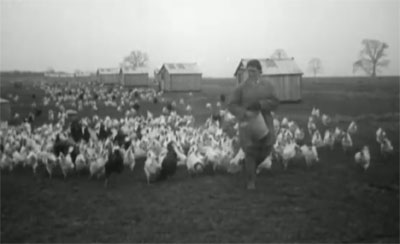 Before the First World War, ducks were the better egg layers and chicken breeds that layed 100 eggs or more per year were considered good layers. Most of the development of pure bred laying hens came after the Second World War when there were many laying trials and tests and it was common for breeders to ‘trap nest’ hens to record their individual output so that they could be used to produce further generations of laying hens.
Before the First World War, ducks were the better egg layers and chicken breeds that layed 100 eggs or more per year were considered good layers. Most of the development of pure bred laying hens came after the Second World War when there were many laying trials and tests and it was common for breeders to ‘trap nest’ hens to record their individual output so that they could be used to produce further generations of laying hens.
Development of the ‘Hybrid’
The developments with pure breeds were soon to be followed by hybrid (a cross of pure breeds) laying hens. There were millions of pounds spent during the 1950’s on creating hybrids that were not only capable of laying more eggs but also had a good feed conversion.
During this development, the parent flocks that created these hybrid layers were becoming a different ‘strain’ of their own because hens were selected for egg production rather than the way they looked.
Interestingly, duck eggs could have been on our breakfast table rather than chickens eggs… but they did not do well kept in confined conditions like chickens.
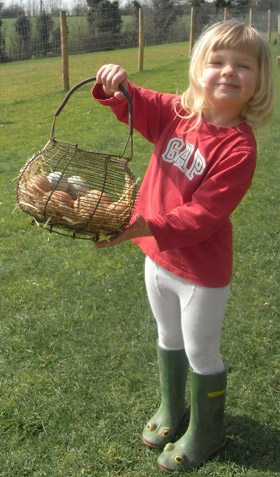 My Top 10 Chickens for Eggs
My Top 10 Chickens for Eggs
The following table lists my top 10 laying hens (a mixture of hybrids and pure breeds) and gives an estimate of the number of eggs they are capable of producing if kept in the right conditions.
Note that there are many different strains of hens from different breeders that will perform differently… egg numbers can vary on a number of other factors too, particularly with feeding and daylight levels.
Exhibition strains that have been closely bred are not usually selected for their egg laying performance. Try to purchase hens from a good ‘Utility Strain’. There are some breeders that advertise utility strains and the number of eggs they expect from their strain every year.
Hybrids are much more reliable at producing a given number of eggs and are bred mainly for this purpose.
1. Goldline (Hybrid)
The ultimate egg machine. This little commercial brown hen will lay up to 320 large brown eggs in her first year. They have a good feed ratio and are very similar to the birds used on farms to produce eggs for the consumer market. A very friendly bird that will be in your house if the door is left open!
2. White Leghorn (Pure Breed)
Small attractive birds with a good feed efficiency that lay up to 300 large white eggs in their first year. These are the standard commercial hen used in the U.S. for egg production (because white eggs are preferred). They can be quite flighty and can fly well so make sure they can be kept securely before you buy them or clip a wing to keep them on the ground.
3. Nera (Hybrid)
Hardy birds that are great foragers and layers of a good quality large brown egg. The Nera is a cross between a certain strains of Rhode Island Red and Barred Plymouth Rock, originating in Scotland. You can expect around 270 eggs in their first year.
4. Amber (Hybrid)
The Amber is a Rhode Island Red based hybrid that looks attractive and has very soft feathering. She is a fantastic layer of up to 300 medium eggs in her first year.
5. Speckledy (Hybrid)
The Speckledy is a flecked dark hen, a cross of a Rhode Island Red and Marans. She lays around 270 large dark brown eggs in her first year.
6. Rhode Island Red (Pure Breed)
The Rhode Island Red is a good layer of up to 220 large brown eggs in their first year. Be sure to get a utility strain though as these are a popular show bird.
7. Marans (Pure Breed)
Good layers of medium to large dark brown eggs. Copper Black Marans seem to be the best layers laying up to 200 eggs in a year. They are often good winter layers, with pullets coming into lay during January.
8. Light Sussex (Pure Breed)
Attractive birds that will reward you with up to 200 medium tinted eggs.
9. Araucana (Pure Breed)
Araucanas are very unique looking. They initially came from Chile in South America. The Araucana lays around 200 medium sized blue to bluish-green
10. Crested Cream Legbar (Pure Breed)
An attractive hen with a small crest that will lay up to 180 medium sized blue to bluish-green eggs that will add a little colour to your egg boxes.

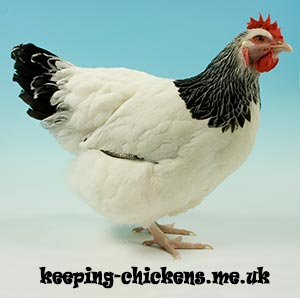

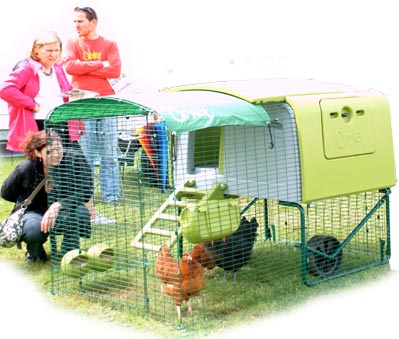
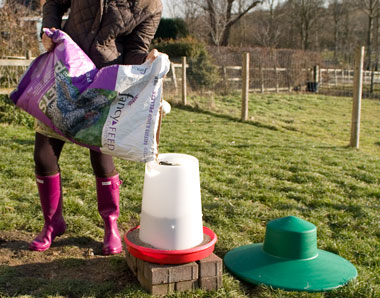

I’m currently researching the best layers to get. Any advice on noise levels? My coop will be quite close to my neighbours and one book I was reading said that some breeds/hybrids are quieter than others.
Hmm it’s debatable – personally, I haven’t found ‘quiet’ breeds.
I wouldn’t get a cock – he will create a noise outside the coop when a chicken lays an egg and tells the World how well she has done as well as crowing. Bantams will be slightly quieter than large fowl.
Hybrids don’t make so much noise, so I would consider those.
Hi. I’m looking to get 3 layers. Is it best to get the same breed or should I mix them?
It’s usually good to select one breed or another because they will be similar in size and behaviour, however you can mix breeds if they are similar sizes and most hybrids are the same size so they can be mixed.
Hi I’m thinking of getting a couple of hens for laying, do you have any advice on friendly breeds that are good little layers?
It mainly depends on how they are reared and how much you interact with them but hybrids in general are more friendly than some pure breeds.
Hi!
I’ve just gotten my first 3 hens, they’re now four weeks old and are hybrids or crosses whichever. I’ve never had chickens before, the one’s I have are as follows: first is a barred Plymouth rock cross sussex, (she is all black but I was told she’ll get silvery around the neck as an adult) second is a sussex white with black tips to feathers in various places and third is a lavender, she is a blue Plymouth rock and a barred Plymouth rock (she is all grey with a lovely laced look to her feathers)
I’ve had them for a week only.
My question is do you think they’re ok to live outside in a large rabbit hutch for a couple of weeks while I choose and buy the best coop/run I can get? The breeder doesn’t believe that chicks need heat lamps and living in doors, she said they don’t do this in the wild, they huddle together for heat and she believes they are stronger for this, and the chicks I bought are quite large and robust, they were outside in a covered run with a lot of other babies the same age.
So they’re in a rabbit hutch and at night time they go into the bedding area and we close them in with a gap for ventilation. They’re growing and are getting a little bit better with us holding them but they do run away a lot still and they’ll eat from our hands and all of that.
But do you think they’re ok out there? They come out every morning with little cheeps and go start eating and running around so seem quite happy, I just feel like as heat lamps and keeping them inside till 8 weeks seems to be the ‘norm’ that keeping them outside is the wrong thing to do. The breeder said if I bring them inside they’ll take a lot longer to acclimatise again to outside when my coop arrives. Any opinions greatly appreciated because like I said these are my first ever chickens!! Thank you
Chicks cannot regulate their. Body temperature until 5 or 6 weeks of age and need to be kept warm. After is, once they are fully feathered, they can huddle up to keep warm and trap air in their feathers to insulate themselves. I wouldn’t have them outside in the cold weather but at this time of year if it is mild and they have dry shelter I would say they will be fine assuming they are older than this and fully feathered.
Yes that was my thoughts on it to, they’re now 5 weeks and a few days old, only feathers that aren’t mature is a very slight bit of fluff on the top of their heads other than that they are fully feathered. Yes they have a completely enclosed shelter that they use as and when they like. Thanks for the reply